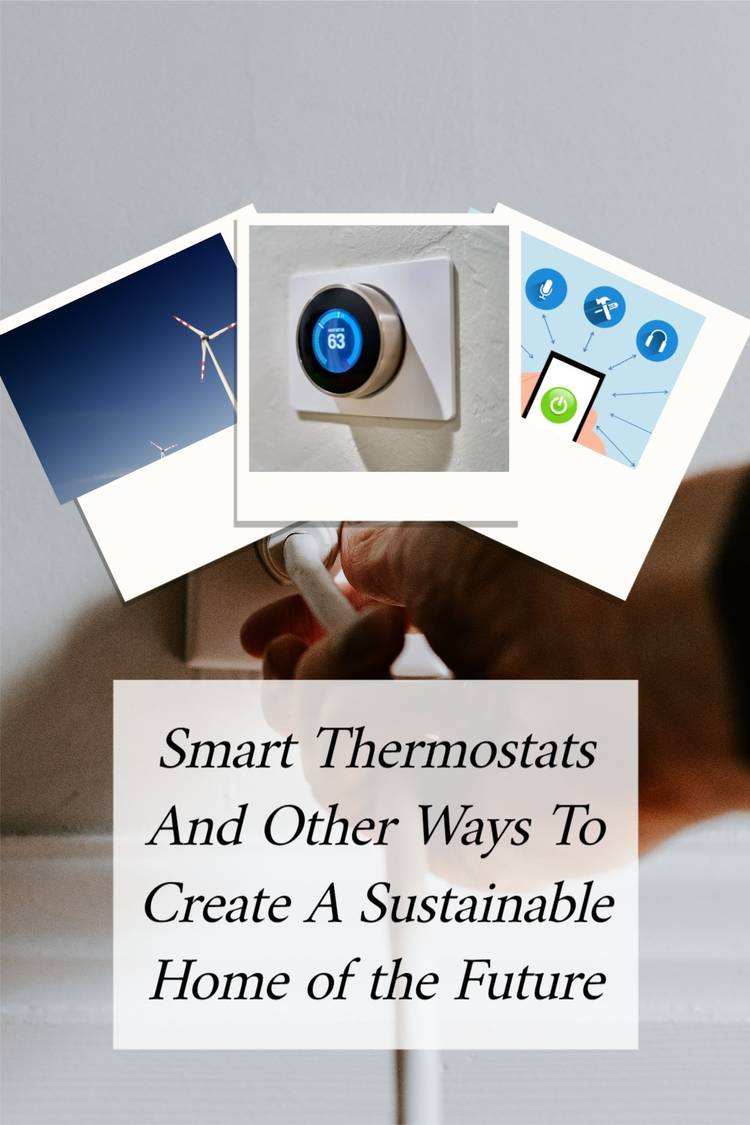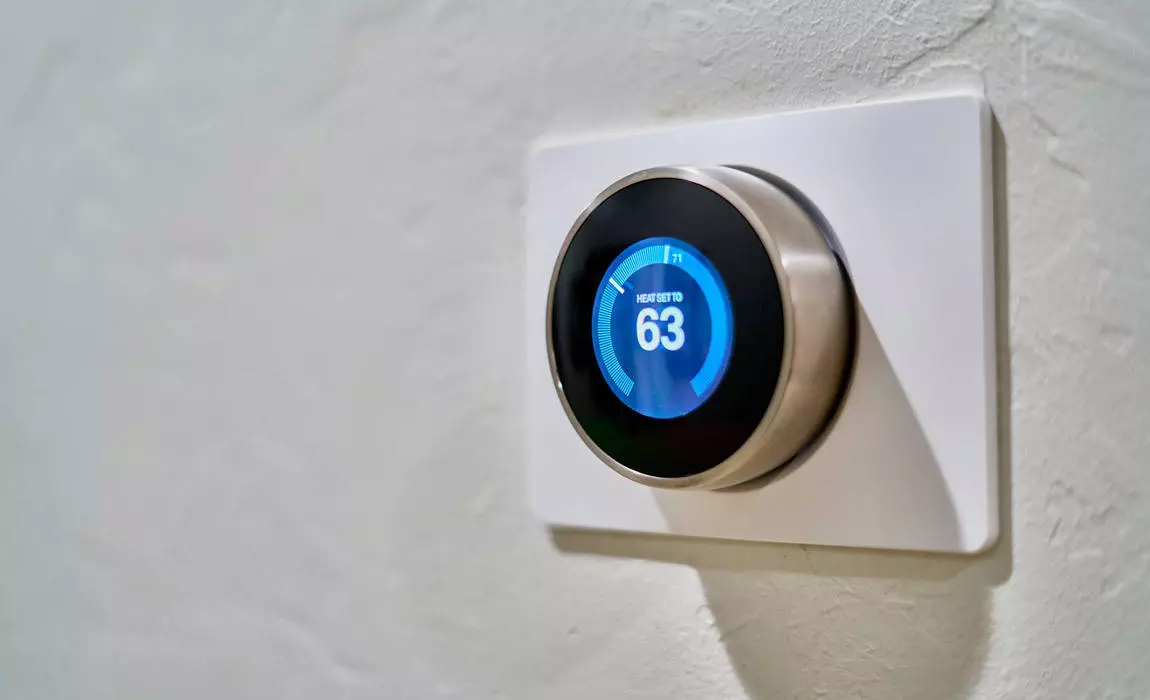When we think about creating a more sustainable future, the first things that come to mind are solar panels and electric cars. However, many people don't realize that there are other things you can do in your home to make your life greener and less wasteful. One way to do this is by installing smart thermostats and energy monitoring sensors in the home. This blog post will discuss why these devices are important for a more sustainable future and what parts of your home can be made more efficient by investing in these sensors.
Electricity Is A Valuable Resource But Most People Have No Idea How Much They Consume
When you use your air conditioning or heating system, it uses electricity or gas. If you have a smart thermostat installed in the home, you can get real-time updates on how much energy each system is using to provide comfort for your family members at any given time. This is only one part of the equation though.
For instance, while a typical home's AC will use 3,500 Watts of electricity per hour, that's not the only device consuming power. A single desktop PC uses up to 200 Watts per hour - more when gaming or being used for heavy tasks.The big screen TV in your living room uses about 230 Watts per hour, and so does your refrigerator.
Even when turned off, some devices such as your TV, game systems, and computers consume energy. While this is generally only 0.5 Watts per hour, that can add up too.
Smart thermostats are an important part of the equation but we can both reduce energy costs and optimize our consumption by making a few changes around the house.
Ultimately, all of these technologies depend on you having both a strong wifi network at home ands a fast connection to the internet so information can get to the cloud and back. With Cox Gigablast you can make sure that there's plenty of bandwidth inside your home as well as a fast reliable connection.
Plus, Cox Homelife can help you set up and monitor your smart home complete with thermostats, plugs, and energy-efficient lightbulbs that are all connected to the central hub to give you better control over your home.
As we continue to move into the future, we'll be increasingly focused on not just the convenience benefits of home automation but also the ability to make smarter decisions and ultimately reduce our consumption too.
Here are some things that you can do now to begin creating a more sustainable home of the future.
Add Smart Sensors To Monitor Electricity Usage
While smart thermostats are a great first step because they can help reduce energy consumption in your heaterand air conditioner by optimizing them in a myriad of ways, whole-home energy sensors are becoming more popular as well.
For instance, Sense is able to monitor different devices by identifying their unique electrical signals and then reporting the energy used to you.
This is a HUGE first step since most people only look at the aggregate amount of energy consumed once a month when the bill comes in. Being able to identify that your television consumed thousands of watts simply providing background noise might be the knowledge that helps you transition to listening to the radio instead.

Invest In Smart Switches To Kill Power Vampires
We usually think of smart plugs as items of convenience designed to turn on or off at our whim simply by calling out to Google or Alexa. However, as we mentioned above, even devices that are "off" are still consuming electricity. Every device that is plugged in is consuming "some" energy, and depending on which devices are in your house, that can add up. By some estimates, these vampire power devices represent as much as 20% of a typical American home electricity bill.
This number is rising as more and more devices are connected. In this situation, even if they are not being used, they are still "on."
What to do in this situation is ultimately a personal decision because smart home devices undeniably create a much more comfortable living experience. Therefore it might not be a simple decision to turn them completely off.
The first step is to use smart sensors to track energy use and identify the worst offenders. The second step would be to determine which devices should be isolated from the energy grid.
In many cases, the easy solution here is to isolate devices such as your gaming consoles and TV. Similarly, many small kitchen appliances such as your microwave, toaster, stand mixer, and others might also be candidates to have a smart switch installed.
According to the National Resource Defense Council, Americans spend as much as $19 BILLION per year on vampire energy costs. While we love saving money, we also like helping to save resources.
Luckily, there are solutions that make this easier than simply running around the house unplugging everything. For instance Belkin offers a Conserve Switch 8-outlet power strip that has "always on" as well as "switched off" outlets. This will allow you to keep your modem on while you isolate the TV, Xbox, and DVD player.
Look At Your Electric Bill For Peak And Off-Peak Hours
Most electric companies offer peak and off-peak hours to help guide you on the best times to consume energy. This doesn't reduce the actual amount of power being consumed but it will help spread the load out so you can reduce the peak usage that forces power plants to burn more coal and natural gas.
Consider Adding Solar Panels And Selecting Renewable Energy Providers
Depending on where you live and if you are a homeowner or rent an apartment, your ability to invest in solar panels for your home may be an option. However, even if you don't have that option, it’s still possible to select an alternative power provider that uses renewable energy sources.
Invest In More Efficient Appliances and Electronic Devices
Finally, investing in more efficient appliances and other electronic devices is a big step as well. For instance, when shopping for a refrigerator, even among Energy Star rated appliances, it isn't apples to apples.
That's why it’s important to read the labels when you shop and not simply look at the price tag.
While browsing the EPA's Energy Star website, I found two 3.5 cu ft freezers - one has an estimated 152 kWh/yr consumption while the other has 172 kWh/yr. That's a 12% difference in energy consumption and over the life of the freezer, will add up to a significant amount of energy ... and cost to the consumer!
Sustainability And Optimization Of Your Energy Use Is The Future Of Home Automation
As we look into the future with the next phase of smart home solutions, sustainability will become an ever more important consideration. While convenience is the driving factor today, I look forward to new and better solutions to help lead us into a more sustainable future too.
